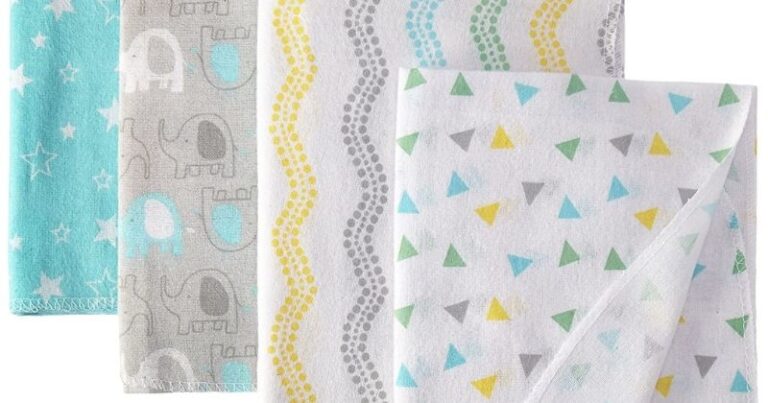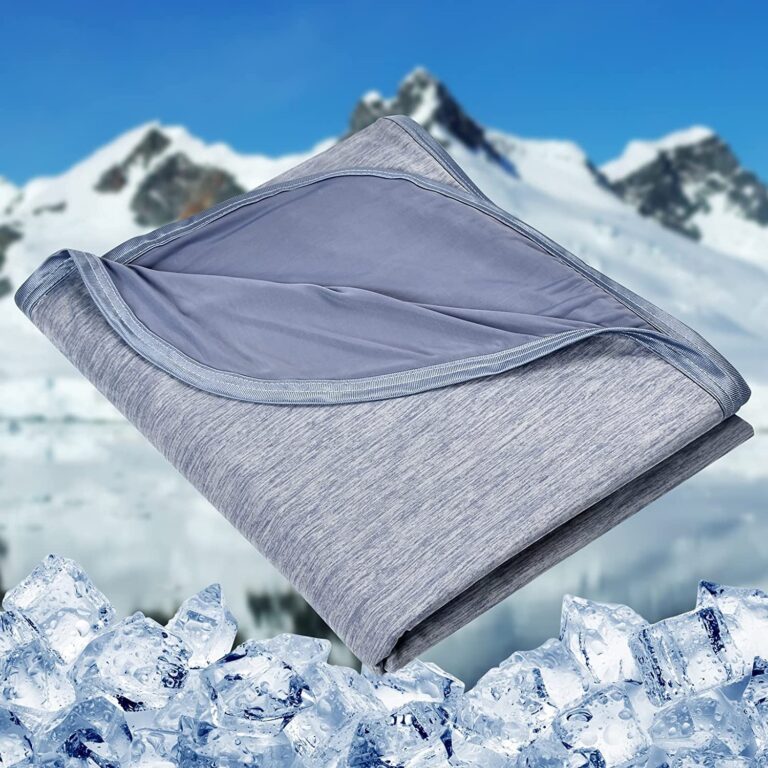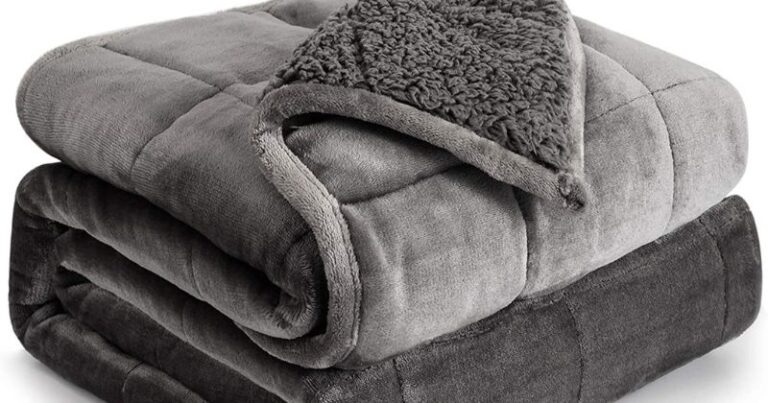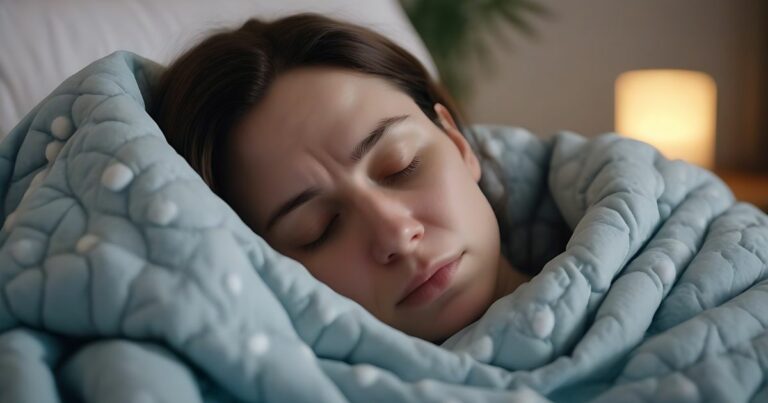Using weighted blankets for sensory processing disorders can be extremely beneficial because sensory processing disorders (SPD) can significantly impact an individual’s ability to process and respond to sensory stimuli in their environment. This can lead to difficulties with attention, emotional regulation, and overall well-being. As researchers explore alternative therapies for managing SPD, weighted blankets have emerged as a potential solution. These blankets provide deep pressure stimulation, which has been found to have a calming effect on the nervous system and help individuals with SPD regulate sensory input.
In this article, we’ll delve into the benefits of using weighted blankets for sensory processing disorders, exploring how they can support sensory integration, promote relaxation, and enhance overall sensory well-being. Join us as we explore the therapeutic potential of weighted blankets in helping individuals with sensory processing disorders navigate their sensory world more effectively.
What are Sensory Processing Disorders?

Before diving into the specifics of weighted blankets, let’s understand what Sensory Processing Disorders are:
Definition of SPD
Sensory Processing Disorders, or SPD, refer to difficulties in processing and responding to sensory information from the environment. This can lead to overreactions, underreactions, or unusual reactions to sensory stimuli, impacting daily functioning.
Common Symptoms of SPD
Individuals with SPD may experience a wide range of symptoms, including:
- Hypersensitivity to light, sound, touch, or smell
- Difficulty concentrating
- Social and behavioral challenges
- Meltdowns or sensory overload
Understanding Weighted Blankets

What Are Weighted Blankets?
Weighted blankets are not your typical bedding. They are specially designed to provide deep touch pressure (DPT) to the user’s body. These blankets are typically filled with materials like glass beads or plastic pellets, distributed evenly throughout the fabric.
How Do Weighted Blankets Work?
Weighted blankets work by exerting gentle, evenly distributed pressure on the body. This pressure stimulates the release of neurotransmitters like serotonin and dopamine, promoting relaxation and calmness. This phenomenon is often referred to as Deep Pressure Therapy (DPT).
Benefits of Using Weighted Blankets for SPD
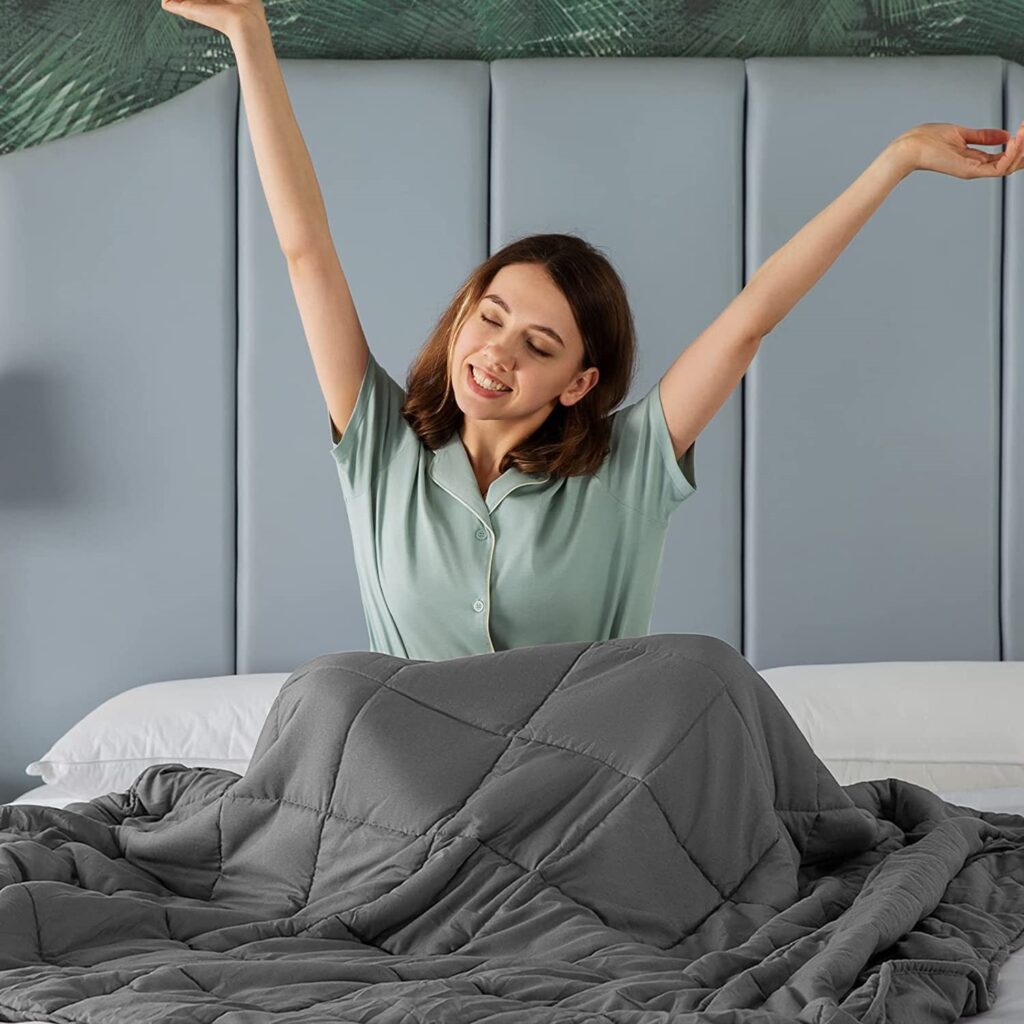
Using weighted blankets for SPD can offer numerous advantages, and it’s essential to delve deeper into these benefits.
Deep Pressure Therapy (DPT) and Its Role
Deep Pressure Therapy (DPT) is the underlying principle behind weighted blankets. It can help regulate sensory processing and emotional regulation. When individuals with SPD are exposed to DPT, it has a calming effect on their nervous system, reducing anxiety and promoting a sense of security.
Reduction in Sensory Overload and Meltdowns
One of the most significant benefits of using weighted blankets is the reduction in sensory overload and meltdowns. The gentle pressure helps individuals with SPD feel grounded and secure, preventing sensory stimuli from becoming overwhelming.
Improved Sleep Quality and Regulation
Many individuals with SPD struggle with sleep-related issues. Weighted blankets can promote better sleep patterns by helping users fall asleep faster and stay asleep longer. The feeling of being cocooned in a weighted blanket provides a sense of comfort and security, making it easier to relax and drift into a peaceful slumber.
Enhanced Focus and Attention
Weighted blankets can improve concentration and focus, aiding in daily tasks and activities. By calming the nervous system and reducing distractions from sensory stimuli, individuals with SPD can better focus on their tasks, whether it’s schoolwork, work assignments, or leisure activities.
Benefits for Both Children and Adults
Weighted blankets are suitable for individuals of all ages, making them a versatile solution for managing SPD. Whether you’re a child struggling with sensory issues or an adult seeking relief from sensory challenges, a weighted blanket can be tailored to meet your specific needs.
Choosing the Right Weighted Blanket
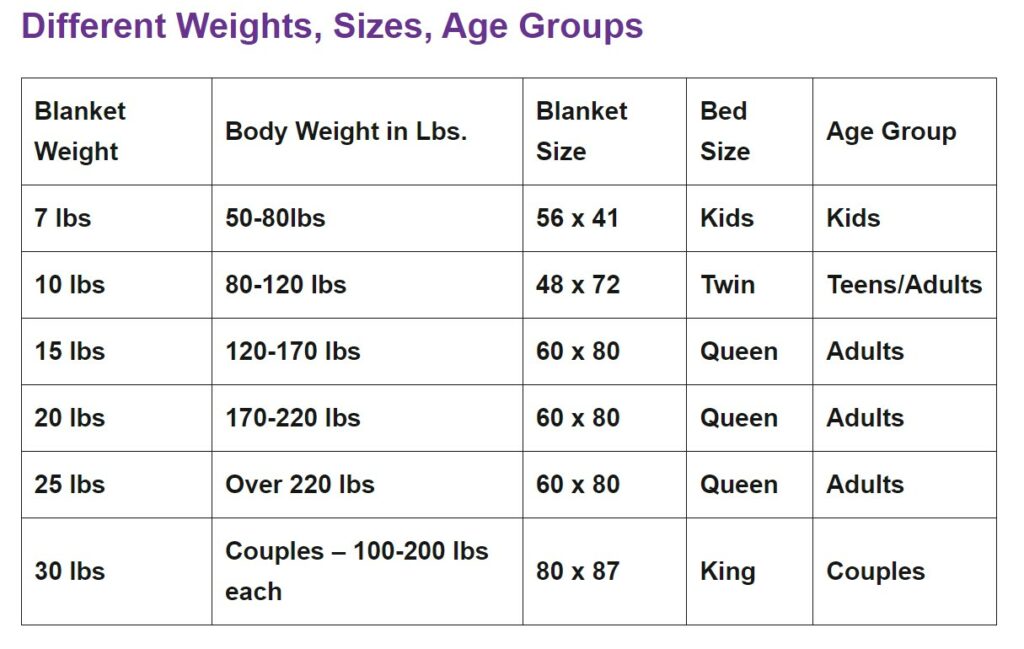
Selecting the right weighted blanket is crucial to maximize its benefits. Let’s explore the factors you should consider when making your choice.
Weight and Size
When choosing a weighted blanket, it’s essential to consider the user’s weight and age to determine the appropriate weight and size. A general guideline is to select a blanket that weighs around 10% of the user’s body weight. However, it’s always best to consult with an occupational therapist or healthcare professional for personalized recommendations.
Material and Fabric
The material and fabric of the weighted blanket play a significant role in comfort and durability. Opt for hypoallergenic and breathable fabrics to ensure a comfortable sleeping experience. Common fabric options include cotton, flannel, and minky.
Design and Aesthetics
While the primary focus is on the therapeutic benefits of the weighted blanket, the design and aesthetics also matter, especially for children. Many weighted blankets come in a variety of colors and patterns, allowing you to choose one that appeals to the user’s preferences. This personalization can make the blanket more appealing and inviting.
How to Use Weighted Blankets Effectively
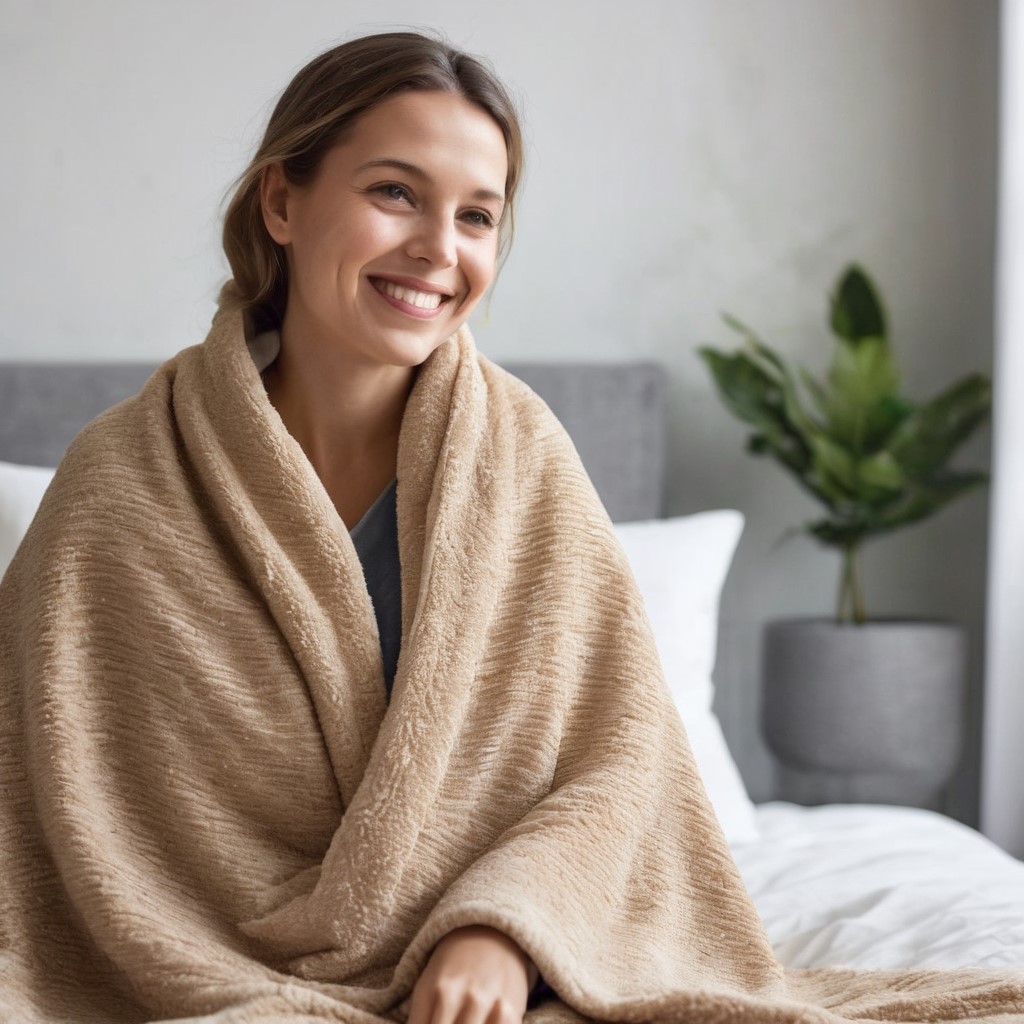
To reap the benefits of a weighted blanket, it’s essential to use it correctly. Here are some tips on incorporating weighted blankets into your daily routine.
Incorporating Weighted Blankets into Daily Routine
Establish a routine for using the blanket, incorporating it into relaxation, bedtime, or focused activities. Consistency is key to maximizing the therapeutic effects of the weighted blanket. Here are some ways to integrate it into your routine:
- Bedtime: Use the weighted blanket as part of your bedtime routine. It can help create a sense of security and calmness, making it easier to fall asleep.
- Relaxation Time: Set aside specific times during the day for relaxation with the weighted blanket. This can be particularly helpful when feeling overwhelmed or anxious.
- Study or Work: If you or your child struggle with focus and attention, use the weighted blanket during study or work sessions. It can help reduce distractions and improve concentration.
Safety Considerations
While weighted blankets can provide therapeutic benefits, it’s crucial to prioritize safety, especially when using them with children or individuals with specific health conditions. Here are some safety considerations:
- Supervision: Always supervise the use of weighted blankets, particularly with young children or individuals with mobility issues. Ensure they can easily remove the blanket if needed.
- Weight Limit: Pay attention to the weight limit recommendations for the specific weighted blanket you choose. Using a blanket that is too heavy can be uncomfortable and potentially unsafe.
- Overheating: Weighted blankets can trap heat, leading to overheating. Choose breathable fabrics and avoid using additional heavy bedding to prevent overheating.
FAQs About Using Weighted Blankets For Sensory Processing Disorders:
Sensory Processing Disorders (SPD) can present unique challenges, and finding effective coping strategies is essential. Weighted blankets have gained popularity as a potential aid for individuals with SPD. In this FAQ section, we address common queries related to using weighted blankets to alleviate sensory processing issues.
Can weighted blankets really help with Sensory Processing Disorders (SPD)?
Yes, weighted blankets have shown promise in providing comfort and relief for individuals with SPD. The gentle pressure from the blanket can help soothe overactive sensory systems, promoting a sense of calmness and relaxation.
How do I choose the right weight for a weighted blanket for someone with SPD?
Selecting the appropriate weight is crucial. As a general guideline, a weighted blanket should be around 10% of the individual’s body weight, plus a few extra pounds for added pressure. However, it’s essential to consult with an occupational therapist or healthcare professional to determine the most suitable weight for your specific needs.
Are there any safety considerations when using weighted blankets for SPD?
Safety is paramount. Ensure that the weighted blanket doesn’t cover the face or restrict movement. Always supervise its use, especially for children. If you have any concerns or questions about safety, consult with a healthcare provider or therapist experienced in sensory processing disorders.
These FAQs provide valuable information for those considering the use of weighted blankets as a potential aid for Sensory Processing Disorders.
In Conclusion
Using weighted blankets for Sensory Processing Disorders can be a game-changer. The deep touch pressure they provide can offer comfort and relief to individuals dealing with SPD. If you or a loved one is struggling with sensory processing challenges, consider incorporating a weighted blanket into your daily routine.
Remember that the journey to managing SPD is unique for each individual, and weighted blankets are just one of the tools available. Consult with a healthcare professional or occupational therapist for personalized advice.
By exploring this therapeutic option, you can take a step towards a more comfortable and manageable life with Sensory Processing Disorders.
If you’re interested in exploring other home decor ideas, visit our sitemap for a variety of related articles.



